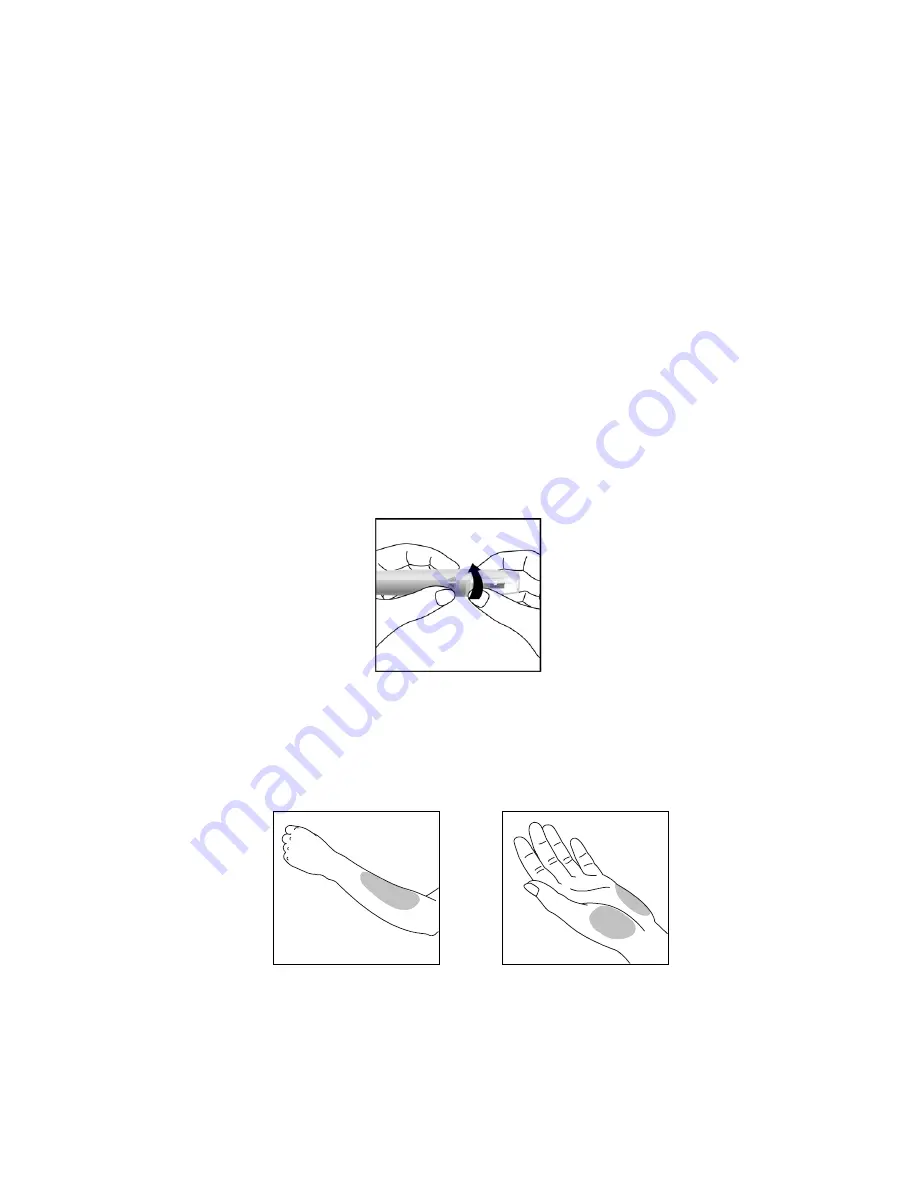
38
IMPORTANT:
There are important differences among forearm, palm and fingertip
samples that you should know. Important Information about forearm and palm
glucose testing:
•
You should consult your healthcare professional before choosing to perform
forearm or palm testing.
•
When blood levels are changing rapidly such as after a meal, insulin dose or
exercise, blood from the fingertips may show these changes more rapidly than
blood from other areas.
•
Fingertips should be used if testing is within 2 hours of a meal, insulin dose or
exercise and any time you feel glucose levels are changing rapidly.
•
You should test with the fingertips anytime there is a concern for hypoglycemia
or you suffer from hypoglycemia unawareness.
Please refer to
Fingertip Sampling
to insert the lancet and load the lancing
device.
1. Screw the clear cap onto the lancing device.
2. Choose a puncture site on the forearm or palm. Select a soft and fleshy area of
the forearm and palm that is clean and dry, away from bone, and free of visible
veins and hair.
To bring fresh blood to the surface of the puncture site, massage the puncture
site vigorously for a few seconds until you feel it getting warm.
3. Place the lancing device against the puncture site. Press and hold the clear
cap against the puncture site for a few seconds. Press the release button of the
lancing device, but
do not immediately lift the lancing device
from the
puncture site. Continue to hold the lancing device against the puncture site
until you can confirm a sufficient blood sample has formed.






































